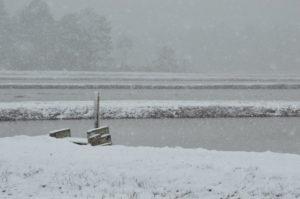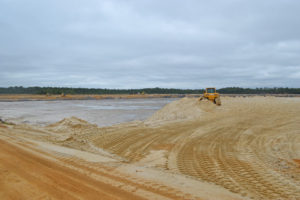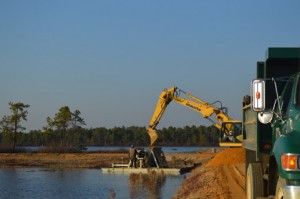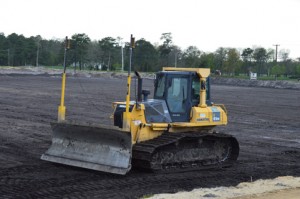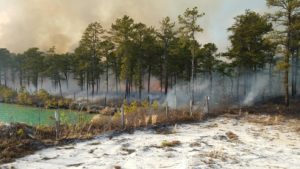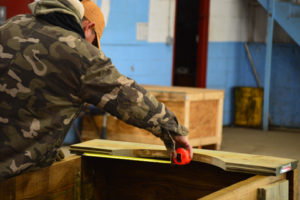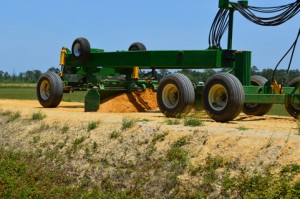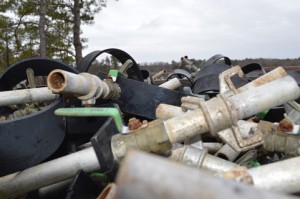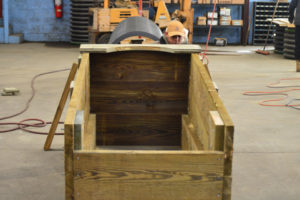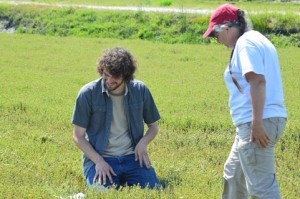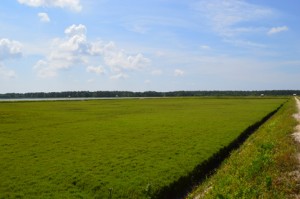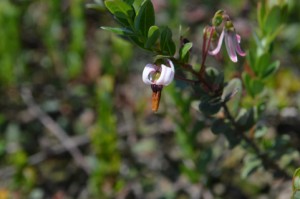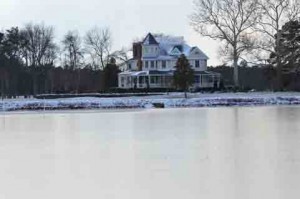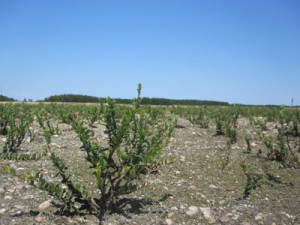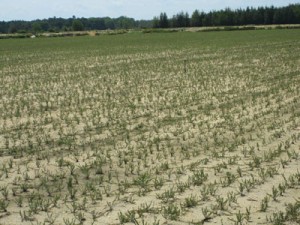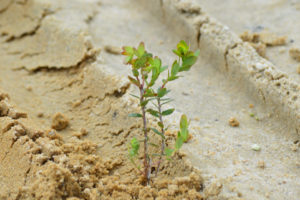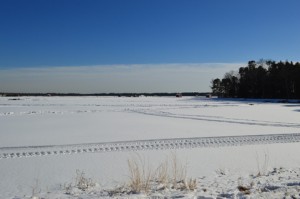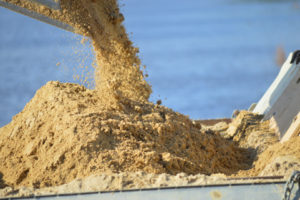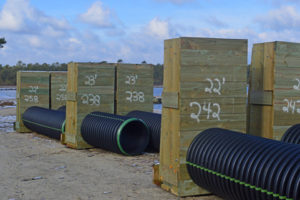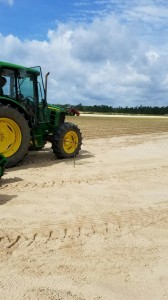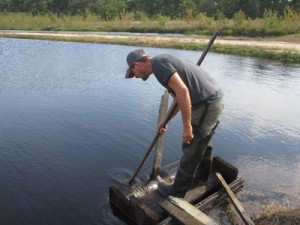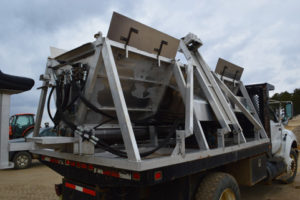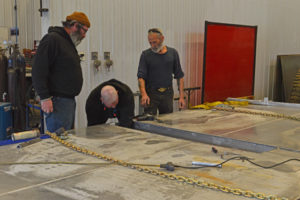Winter tasks are well underway! The winter flooding has begun, which means that it’s once again time to start sanding.
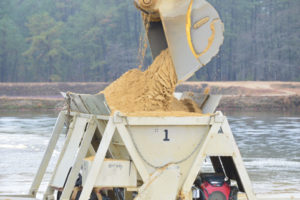
Sanding is a fundamental component of our Pine Island Integrated Crop Management (PIICM) program, helping us manage the relationship between water, soil, weather, disease, insects, weeds, and nutrition. Sanding is a process where we apply a thin layer of sand on the bog surface every four years on a rotating basis: one inch for established bogs, a half-inch for young bogs. This procedure helps improve growth and yield by stimulating the development of new uprights (covering the base of the roots strengthens the root system and creates a more healthy vine) while also suppressing disease and reducing insects (by burying weed seed, spores, and insect eggs). It also improves soil drainage while at the same time absorbing and releasing heat so that frost danger in spring is lessened. This increases our efficiency by lowering the need for extra plant nutrition as well as saving water by cutting down frost irrigation times.
The routine usually remains the same every year. First, we check water levels: our team needs to make sure the water is the right depth so our sanding barge doesn’t get stuck on any vines or worse, tear them out. Also, the sand needs to be as pure as possible in order to prevent soil compaction (which can restrict water and limit growth) so we screen our sand before using it on the barge to take out any clay, stones, or other debris which could cause problems.
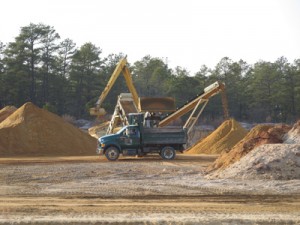
Our team begins to prep a couple of days beforehand by checking to see how much the water level needs to come up. The day before the crew arrives, a supervisor will get the water to sanding level (high enough to cover all vines) and measure out the distance the sander will travel. The crew will begin to sand on the deepest side. The water level can then be adjusted if necessary, which helps with dam conservation. They also send the necessary equipment out to the sanding location. A tractor with a winch is on one side of the bog, ready to move the length of the bog; an excavator is on the opposite side of the bog. The cable from the winch is stretched across the bog, through the sander (which has been lifted and put in the bog next to the excavator), and connected to the excavator.
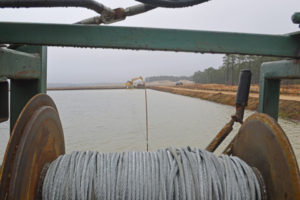
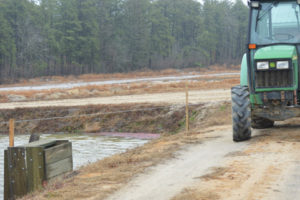
The process itself is simple: a truck is loaded with sand, then heads over to the bog being sanded, backs up to the excavator, and drops the load into our specially built sandbox (designed to improve efficiency and reduce waste). The excavator operator then loads the hopper of the sander, while the sander operator moves along the cable, adjusting the opening for the sand to fall. The process is repeated, with the excavator and tractor moving forward the length of the bog together.
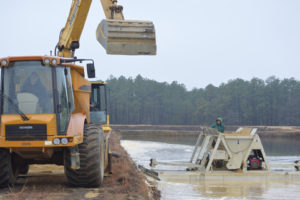
“We got a later start than we wanted, because we had so much fall work to do,” says manager Matt Giberson. “Since we had some things to finish up first, like installing new irrigation in the Nadine system, we’re only running two sanding crews right now.” He plans on starting a third crew on Monday in an effort to get ahead of an upcoming cold snap: “Looking at the forecast they’re saying that it’s supposed to get really cold in the middle of the month. So we’re going to get as much done as we can then for now, just in case that does happen and the sand freezes up.”
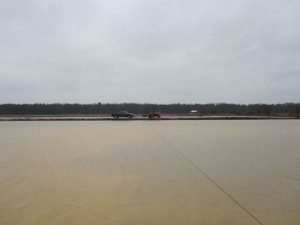
Our team is also working on a new solution to the annual challenge of sanding the perimeter of each bed. Because the sanding barge can only come up to the dam to for a fresh load of sand, there’s a distance from the ditches at both the beginning and end of the dam which can be missed. We have tried a number of different things the past few years to hit these spots, and this year our equipment team is putting the finishing touches on the latest: “We have a new tractor that does the edge and will pull a sander around with it,” Matt says. “Louis is working on it now with Larry, and it should be ready pretty soon.”
And with only 300 acres to do this year, (100 acres less than the usual number), our team will have things a bit easier, weather permitting!

